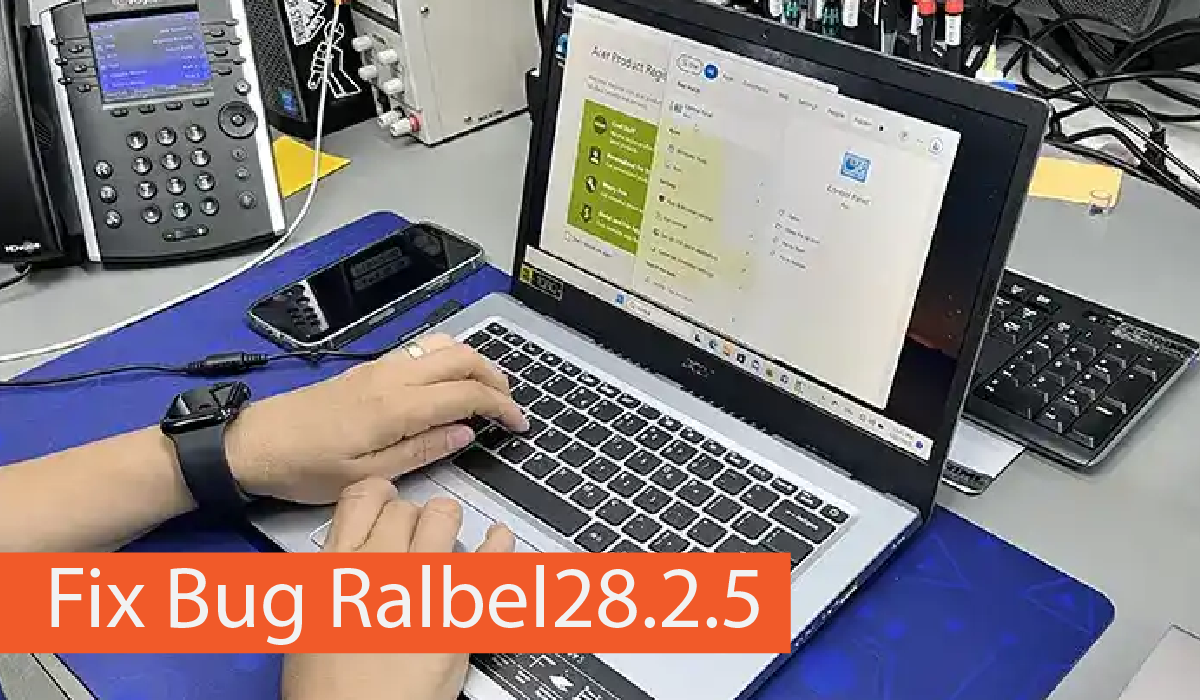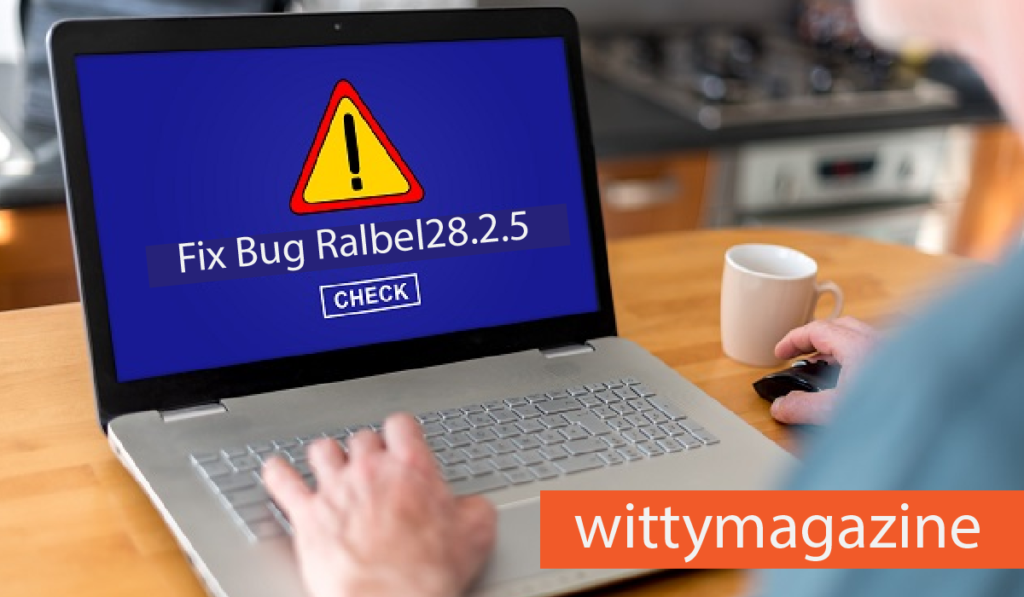In the ever-evolving digital workspace, software updates are meant to bring improvements, stability, and new features. However, the recent release of Ralbel version 28.2.5 has instead introduced a wave of unexpected problems. Users across forums and professional platforms are urgently searching for how to “fix bug Ralbel28.2.5,” reporting serious issues like sudden crashes, broken plugins, failed installations, and performance bottlenecks. The problem is affecting developers, system administrators, and everyday users alike—especially those who rely on Ralbel for critical workflows or production-level tasks.
With some users facing total workflow breakdowns and others only minor glitches, it’s clear this bug has a wide impact, but no one-size-fits-all solution. That’s why this guide aims to provide a complete, deeply informative, and practical explanation of the problem, including why it happens, how to troubleshoot it, and how to prevent it in future versions. If you’re here to find real solutions, not vague advice, you’re in the right place.
What Is Ralbel28.2.5 and Why the Update Went Wrong
Ralbel is a widely used productivity and development software known for its modularity, plugin support, and cross-platform compatibility. Many professionals use it for design, data processing, coding workflows, and even team collaboration tasks.
The recent release—Ralbel28.2.5—was expected to enhance memory management, improve plugin loading speed, and offer better compatibility with modern frameworks. Unfortunately, the release backfired for many users.
Instead of improving reliability, this update introduced instability, broken extensions, and system crashes, which are now collectively referred to as the “fix bug Ralbel28.2.5” issue. The software either refuses to boot properly, behaves unpredictably, or stops responding altogether in certain environments.
This makes it an urgent concern for anyone running a business or managing time-sensitive work on this platform. In such a context, understanding the exact nature of this bug is critical—not just to resolve current problems, but to avoid them in the future.
Common Symptoms That Indicate You Need to Fix Bug Ralbel28.2.5
The symptoms of this issue can vary, making it difficult to pinpoint. However, a number of common complaints have emerged from users across different platforms. Most notably, people report random crashes that occur without any error message or warning, especially during high-memory tasks like rendering or code compiling.
The user interface becomes unresponsive during routine actions like file imports, dragging elements, or opening settings. In many cases, plugins that worked perfectly in earlier versions either refuse to load or crash the entire application.

Another major sign is installation failure—where the update stops midway and leaves behind broken or half-installed files that further corrupt the system. In more technical setups, users have noted excessive CPU and RAM usage, especially in background processes. Some professionals working with databases also reported sync errors that led to data inconsistency.
These issues often appear alongside error codes like RBL-1024 and RBL-2048, or even worse—no error at all, making the diagnosis frustrating. All of this points to a widespread software-level problem that needs systematic resolution.
ore From Info: Business Guide Aggr8Investing: Powerful Secrets For Smart Growth
Why the Ralbel28.2.5 Bug Happens: A Look at Root Causes
To truly fix bug Ralbel28.2.5, we need to look beyond symptoms and understand the root causes. The problem is not caused by just one thing—it’s the result of a cluster of interrelated issues.
First, many users experienced incomplete installations. Due to network interruptions, system conflicts, or lack of permissions, the update didn’t finish properly, leaving behind broken binaries.
Second, compatibility conflicts are a major cause. Users running older operating systems, outdated plugins, or unsupported drivers may find that version 28.2.5 simply doesn’t work with their setup.
Third, corrupted installation files or misconfigured dependencies can cause essential components to misfire. Even something as minor as a missing DLL or incorrect library path can trigger failure.
Fourth, resource bottlenecks can lead to sudden crashes, especially on systems with lower RAM or limited CPU availability.
And finally, version 28.2.5 itself introduced new memory management logic that may contain unpatched bugs or memory leaks.
According to the National Institute of Standards and Technology (NIST), it’s not uncommon for new patches to break compatibility before future updates stabilize the system. All these causes demand a strategic and layered troubleshooting approach.
Step-by-Step Guide to Troubleshooting the Fix Bug Ralbel28.2.5
The first thing you should do is restart your system and clear cache. On Windows, use Disk Cleanup or delete temp folders manually. On macOS and Linux, you can use terminal commands like rm -rf /tmp/* to clear temporary data.
Sometimes, these simple actions can resolve minor configuration clashes. Next, verify the installed version of Ralbel using GUI settings or command-line utilities, and if possible, compare file hashes to confirm the integrity of the installed files.
If this doesn’t help, proceed to a clean reinstallation. Uninstall the software completely, including clearing AppData, Program Files, or Library folders depending on your OS. Download the latest verified version from the official site and install it cleanly.
If the issue persists, consider a version rollback to 28.2.4, which was reported to be stable. Many users have done this successfully, and it buys time until an official hotfix becomes available. Another approach is to disable or remove plugins one by one and restart Ralbel to isolate the faulty extension.
Lastly, check your system compatibility—ensure your OS is fully updated, and install any missing .NET, Java, or system-level libraries. These steps fix the issue for most users, but more advanced fixes may be needed in persistent cases.
Advanced Technical Fixes for Experienced Users and IT Teams
If you’re comfortable digging deeper into your system, you can try a few advanced techniques to fix bug Ralbel28.2.5. One such approach is to run the software in compatibility mode—for example, in Windows, right-click the application icon, go to Properties → Compatibility, and set it to a previous working environment.
You can also test the software in a sandbox or virtual machine, especially if you’re planning to deploy it on production systems. This helps isolate and monitor changes safely. A
nother method is to modify startup configurations, such as changing environment variables, increasing memory allocation, or disabling hardware acceleration. Finally, check if the vendor has released a hotfix, even if unofficial or in beta.
These are often published on support forums before being pushed through auto-update channels. By combining these advanced steps with earlier troubleshooting techniques, you drastically improve your chances of resolving the bug fully.
Case Study: How One Developer Fixed the Bug in a Live Environment
To illustrate how these steps work in real life, consider a developer who updated to Ralbel28.2.5 and immediately faced application crashes every time they tried to load a custom plugin. First, they reinstalled the software, which did not help.
They then rolled back to version 28.2.4, which restored basic functionality. Next, they tested the same plugin in a virtual environment and discovered that Ralbel28.2.5 introduced stricter file access policies, causing the plugin to fail.
By modifying file permissions and rebuilding the plugin with updated libraries, they managed to make it work again. This example underscores the importance of isolating the issue step-by-step and taking a methodical approach to troubleshooting rather than guessing.
Pros and Cons of Different Fixing Methods
It’s worth reviewing the strengths and limitations of each fix. A hotfix patch is often the fastest solution, but it can introduce new bugs or compatibility issues. A full reinstall is thorough and removes corruption, but takes time and may erase settings. A version rollback ensures stability but could leave you vulnerable if the older version lacks security patches.
Disabling plugins helps identify the problem but disables useful features in the meantime. Waiting for updates requires no effort, but may leave your system unstable and unproductive. The best approach depends on your use case, technical comfort level, and urgency.
How to Prevent the Ralbel28.2.5 Bug in Future Updates
Prevention is always better than a cure. Start by creating regular backups and system snapshots before applying updates. Use a staging environment to test major software upgrades before rolling them out on mission-critical machines. Monitor developer communities and user forums for early warnings and feedback.
Keep your dependencies, drivers, and operating systems up to date, so that compatibility remains high. Lastly, use performance monitoring tools to track memory leaks and CPU spikes in real-time. This allows you to detect problems early—before they become system-wide failures.
Conclusion
The “fix bug Ralbel28.2.5” issue is not just an isolated glitch—it reflects the complexity of software environments today. By understanding the symptoms, root causes, and multi-layered solutions, you can resolve it effectively and protect your systems going forward.
The key takeaway is not to panic. Take a step-by-step approach, apply logical fixes, and always back up before experimenting. And most importantly, stay informed—because the next update might either fix everything or break it all again.
FAQs
1: What is the main cause of the Ralbel28.2.5 bug?
The main cause of the bug in Ralbel28.2.5 is a combination of incomplete installation, compatibility conflicts, outdated drivers, and potential memory leaks introduced in the latest update. For many users, corrupted update files or misconfigured system dependencies triggered crashes, slowdowns, and plugin failures. It’s not a single-point failure—it’s often multiple small issues stacking together.
2: Is it safe to continue using Ralbel28.2.5 despite the bugs?
It depends on your situation. If your system isn’t experiencing critical crashes or data loss, you can continue using it while monitoring performance. However, if the software is unstable or you’re handling sensitive data, it’s safer to either roll back to version 28.2.4 or apply any hotfixes released by the vendor. Stability and data integrity should always be the top priority.
3: Can I fix bug Ralbel28.2.5 without uninstalling the software?
Yes, in many cases you can fix the issue without a full uninstall. Try clearing your cache, disabling problematic plugins, updating system dependencies, or running the software in compatibility mode. These quick fixes work especially well when the installation is mostly intact but facing small conflicts or performance lags.
4: Does this bug affect all operating systems equally?
No, the effects vary based on OS. Windows users report more crashes and memory usage spikes, while macOS and Linux users often face plugin or permissions issues. The underlying bug is present across platforms, but how it manifests depends on system configurations, OS versions, and driver support.
5: When should I consider downgrading to Ralbel28.2.4?
If Ralbel28.2.5 continues to crash, lag, or fail to launch—even after basic troubleshooting like clearing cache and updating drivers—it’s a strong sign you should roll back to the more stable 28.2.4 version. Downgrading is especially recommended if you’re on a deadline, using Ralbel in production, or handling critical tasks that can’t afford disruption.


